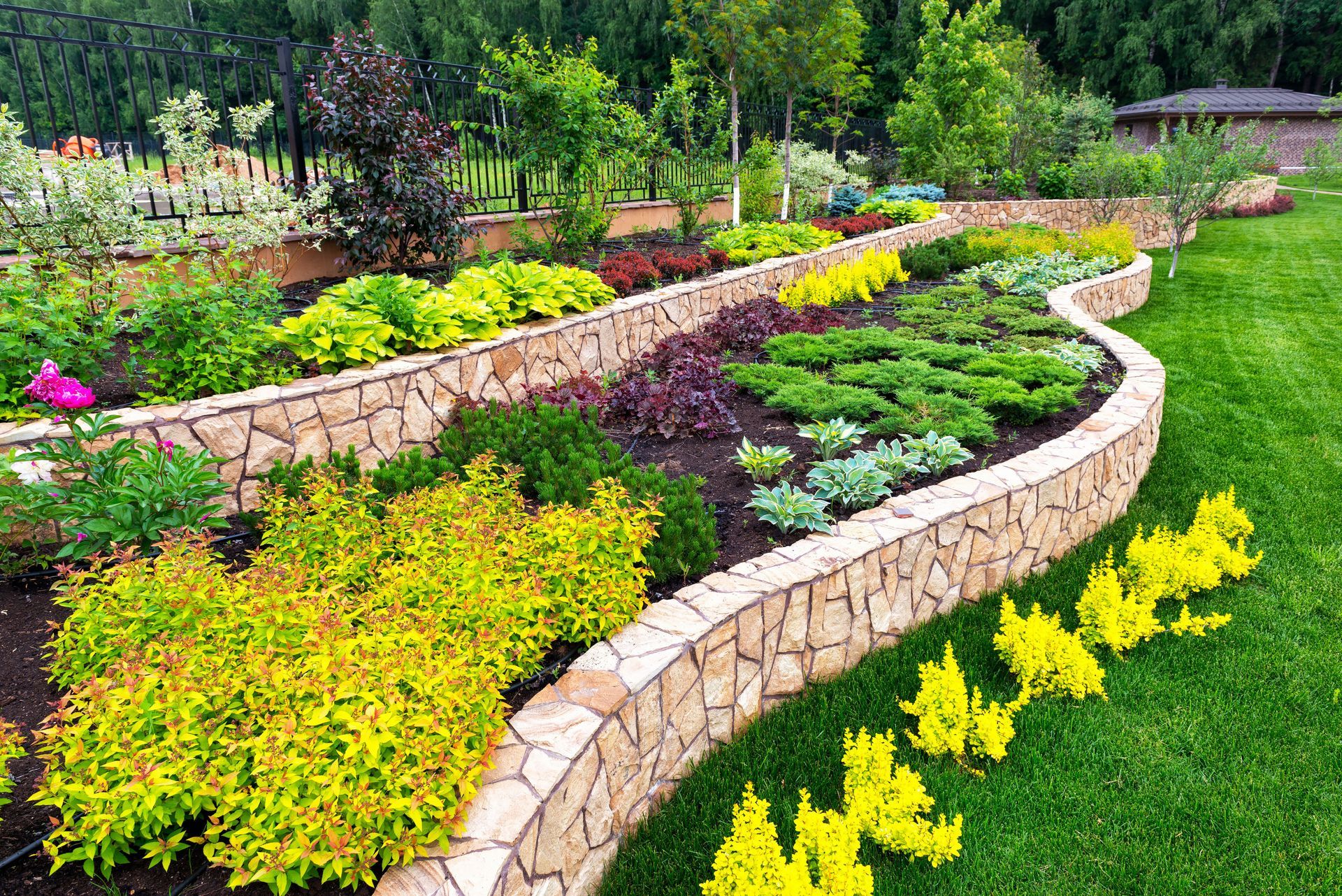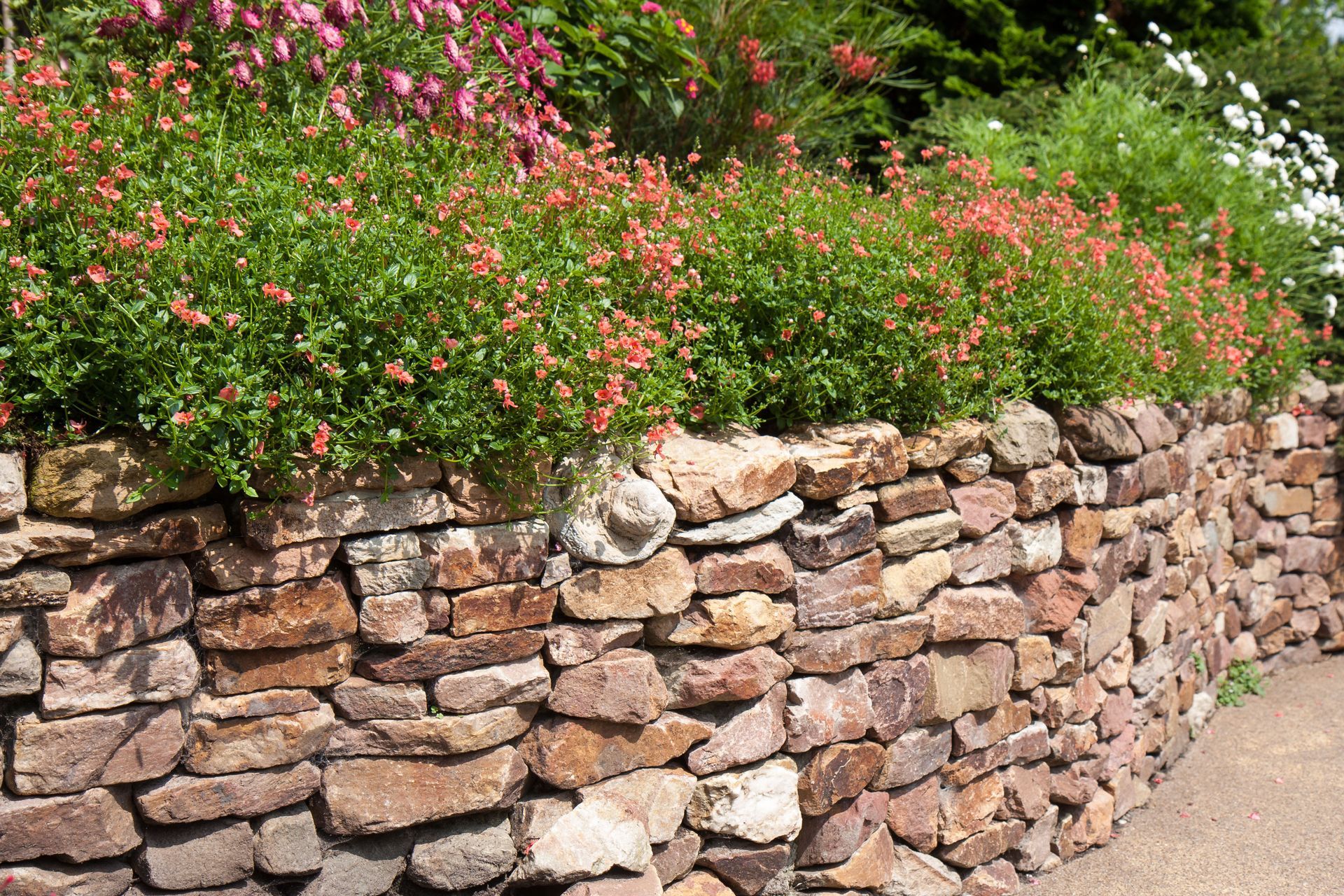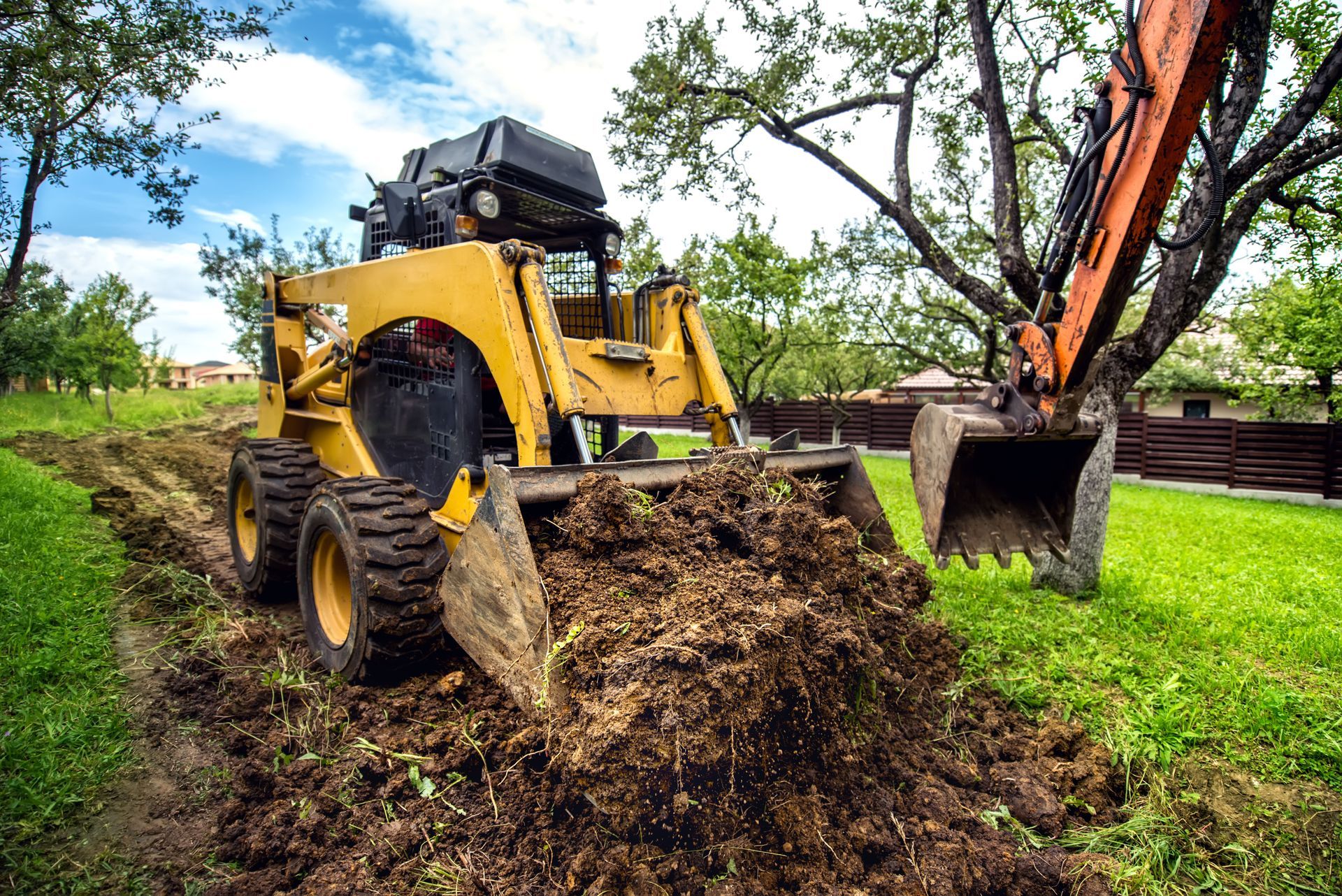4 Landscape Rock Types Perfect for Your Yard
Transforming your yard into a scenic retreat involves choosing the right landscape rocks that complement your garden features and overall aesthetic. This guide explores six types of landscape rocks, each bringing unique benefits and appeal. One of the key considerations when selecting landscape rocks is the functionality—different rocks serve different purposes, from creating pathways to providing drainage solutions. According to the Freedonia Group, packaged products account for 70% of lawn and garden consumables, and choosing rocks is particularly important in both aesthetic and functional landscaping. Understanding the unique attributes and applications of different rock types allows for strategic planning, ensuring that each component of your yard works harmoniously together. This article aims to provide a comprehensive look at four popular types of landscape rocks and how they can enhance your yard's beauty and usability.
1. River Rocks: Natural Beauty and Versatility
Characteristics of River Rocks
River rocks are smooth, rounded stones naturally shaped by the water flow over many years. They vary in size from small pebbles to large cobbles, and come in an array of colors, from warm browns to cool grays. The natural, polished look of river rocks makes them ideal for any landscaping project, lending a natural and elegant appearance to gardens and outdoor pathways. Because they have been naturally sculpted by water, river rocks have a timeless appeal that can easily blend with any garden style, from rustic to modern. Their diverse color palette and texture add a unique visual interest to landscaping designs, making them a highly sought-after type of landscape rock.
Best Uses for River Rocks in Landscaping
River rocks are highly versatile and can be used in a variety of ways in landscaping. They are perfect for creating borders or edging around flower beds, which helps in defining spaces and preventing soil erosion. These rocks are also frequently used in creating dry creek beds that add a naturalistic water feature without the maintenance of actual water. River rocks can also serve as a base for patios or stepping stones, improving drainage and preventing puddles or muddy areas. Furthermore, they are an excellent choice for mulching since they retain moisture and suppress weeds, providing both functional and aesthetic advantages. When properly placed, this type of landscape rock also enhances the definition of garden spaces.
Installation Tips for River Rocks
When installing river rocks, it's important to start with a clear plan. First, clear the area of debris and existing vegetation, and lay a landscape fabric to prevent weeds from growing through the rocks. River rocks should be evenly distributed, and you might find it useful to layer them over a base of smaller gravel to improve stability and drainage. When building a dry stream bed, it's helpful to use various sizes of river rocks to mimic the natural appearance of a creek. For borders, simple edges or containers can keep the rocks in place, ensuring a tidy and organized look. Regular maintenance, like applying a fresh layer every few years, can keep the installation looking fresh and effective in serving its purpose. In many cases, a well-maintained landscape rock installation adds long-term value to the yard.
2. Decomposed Granite: Eco-Friendly and Accessible
Understanding Decomposed Granite
Decomposed granite (DG) is made from natural igneous rock that has weathered over time into smaller particles. It is often used as a compact aggregate material in landscaping due to its fine texture and natural appearance. Decomposed granite comes in a variety of colors and is a versatile option for a range of outdoor settings. Its small particles make it easy to spread and compact, ensuring a stable surface for foot traffic or furniture. Decomposed granite can provide a natural yet refined look that integrates well with gardens and outdoor spaces. Many homeowners pair DG with another type of landscape rock to balance functionality with beauty.
Benefits of Choosing Decomposed Granite
Decomposed granite is an affordable option that is easy to install compared to other hardscape materials. Its porous nature means it's an environmentally friendly solution that facilitates water drainage, reducing erosion and runoff. The material's natural aesthetic is visually appealing and can increase curb appeal without a significant increase in budget. Decomposed granite is also low maintenance, and unlike organic mulch, it does not need to be replaced periodically, reducing both labor and material costs. Its durability means it can withstand heavy foot and vehicle traffic without succumbing to wear and tear, making it a reliable choice for both residential and public landscaping projects.
3. Flagstone: Elegant and Durable
The Appeal of Flagstone
Flagstone is a widely favored choice for patios, walkways, and steps due to its naturally elegant appearance and resilience. It's a sedimentary rock that is typically cut into flat, irregular pieces, lending a rustic yet refined look to gardens. The earthy tones and organic shapes of flagstone naturally integrate with outdoor environments, giving them an authentic and timeless appeal. These stones offer a smooth and sturdy surface, perfect for high-traffic areas, blending functionality with beauty. Available in various colors such as red, gray, and blue, flagstone can suit a variety of aesthetic preferences in landscaping design. For homeowners seeking sophistication, this form of landscape rock is a long-lasting solution.
Long-term Benefits of Flagstone
One of the key long-term benefits of flagstone is its extreme durability and suitability to a wide range of weather conditions. Unlike some other materials, flagstone does not degrade easily, which makes it a cost-effective choice for permanent installations. Its natural slip-resistant surface provides safety in both wet and dry conditions, ideal for walkways and patio areas that are frequently used. Flagstone's timeless elegance can increase property value, as well-installed hardscapes are a desirable feature for homebuyers. Furthermore, its toughness lets it withstand pressure from heavy furniture and foot traffic without cracking or warping.
Selecting the Right Flagstone for Your Yard
Selecting the right type of flagstone depends largely on the intended use and aesthetic requirements of your landscape. Thicker stones are preferable for driveways and areas expected to bear significant weight, while thinner stones may suffice for less-trafficked garden paths. Color choice should complement the surrounding environment and other materials used in the garden. Consider the texture of the stones—rougher surfaces may be more suitable for slippery areas while smoother stones can be elegant underfoot for pathways. When choosing flagstone, ensure it's harvested sustainably, minimizing environmental impacts associated with quarrying.
4. Gravel: Cost-Effective and Practical
Creative Uses of Gravel in Gardens
Gravel is often used to create garden pathways and patio areas due to its cost-effectiveness and ease of installation. It can provide texture and contrast to plant beds, enhancing the visual appeal of the landscape while reducing maintenance costs. Gravel can also be used to create distinctive borders or accents, defining spaces within a garden layout. Its ability to complement water features by ensuring proper drainage makes it suitable for creating dry creek beds or lining waterway edges. Furthermore, gravel works as an effective base layer for more complex installations, like decomposed granite paths and flagstone patios. When integrated with other types of landscape rock, gravel creates a layered and balanced outdoor design.
Benefits of Incorporating Gravel
Incorporating gravel into a landscaping design provides several advantages. It is a highly affordable option that needs minimal maintenance, as it does not degrade over time. Gravel aids in drainage, reducing water accumulation, and providing solutions for dealing with stormwater runoff. Because of its natural heat-retention properties, gravel can also create warmer microclimates beneficial for certain plant species. With its versatility and availability in numerous colors and sizes, gravel can adapt to different garden styles, from contemporary to rustic. This adaptability ensures that it remains a popular choice for both residential and commercial landscaping projects.
Installing and Maintaining a Gravel Landscape
Installing gravel requires laying down a proper base to prevent shifting and weed growth. It's advisable to start with a weed barrier and a base layer of crushed rock for stability. Spreading the gravel evenly across the surface is key, followed by a thorough raking to smooth out the surface and fill any gaps. For a polished look, adding edging materials such as metal or natural stones can keep the gravel contained. Maintenance involves periodic raking and leveling, as well as topping off the gravel as needed to combat compaction. Despite requiring minimal upkeep, regular vigilance ensures long-term performance and aesthetic maintenance.
Creating a beautiful and functional outdoor space is all about making the right choices with your landscaping materials. From river rocks that add natural elegance to flagstone that delivers timeless durability, each type of rock offers unique benefits to elevate your yard. By selecting the right mix, you can enhance both aesthetics and practicality, ensuring your landscape stands the test of time. Whether you need gravel, flagstone, or another type of landscape rock, the right choice will transform your outdoor design. For quality materials and expert guidance, contact Herman's Landscape Supplies today to start transforming your outdoor space.





Share On: